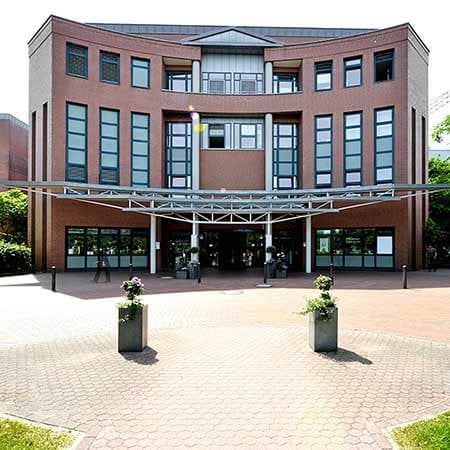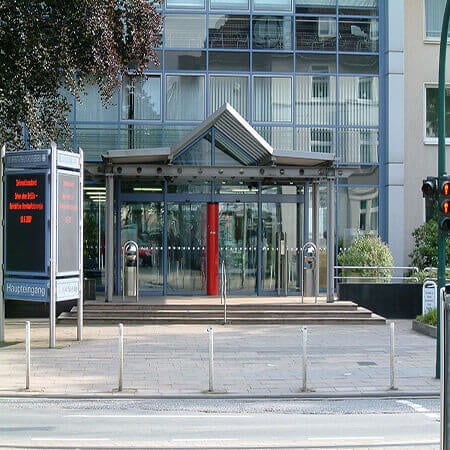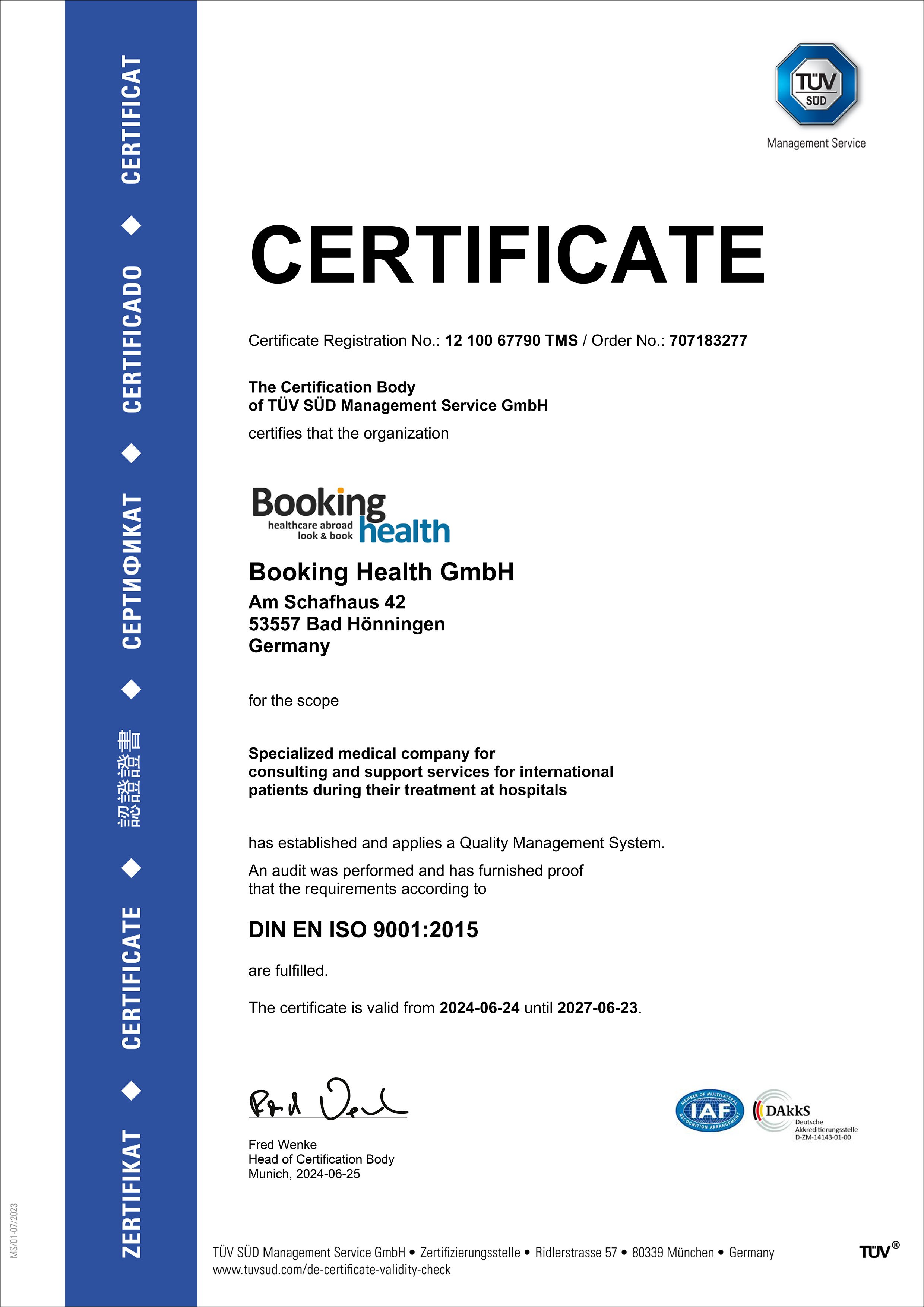Narrowing of the atrioventricular orifice can occur due to changes in subclavian structures, and fibrous degeneration of the valve ring. This creates an obstruction of blood flow, accompanied by decreased circulation volume.
Content
- Mitral stenosis overview
- Clinical manifestation
- What causes mitral valve stenosis?
- Mitral stenosis as a complication of aortic valve replacement
- Combined cardiac valve impairment
- Complications of mitral valve stenosis
- Treatment principles in hospitals in Germany
- Surgical options for mitral valve stenosis
- The recovery period after surgery
- Prognosis
- Which hospitals in Germany choose for treatment?
- The cost of treatment
- How to start treatment in Germany?
Mitral stenosis overview
In mitral stenosis, the left atrium is overloaded with pressure, and over time it becomes overstretched. When the left atrium can no longer withstand such an overload, the pulmonary veins above the left atrium start actively supporting the process. But sooner or later they also cease to cope with high-pressure levels, and as a result, blood begins to leak from the pulmonary veins into the lung tissue. As a result of such "flooding", part of the lung tissue ceases to fully participate in gas exchange. To compensate for the resulting oxygen deficit, the rest of the lung tissue will try to increase gas exchange, due to which shortness of breath occurs. With further development of disease, the entire small circle of circulation, up to the right ventricle will be subjected to blood overflow. When the right ventricle will be involved in "solving this problem", there will be fluid overflow in the large circle of circulation, therefore, many unpleasant symptoms will appear.
Clinical manifestation
Mitral valve stenosis is manifested by thickening or convergence of the cusps, reduction of the size of valve’s opening. As a result, blood flow is impeded, and the left atrium begins to work with an increased load. This causes the left atrium to enlarge.
Due to the decreased mitral orifice area, the pressure increases in the left atrium and then in the pulmonary veins, through which oxygen-enriched blood from the lungs enters the heart. Usually, the pressure in the pulmonary arteries begins to increase when the diameter of the orifice becomes less than 1 cm, compared to the normal 4-6 cm, spasm occurs in the pulmonary arterioles, which aggravates the process. Thus, the so-called pulmonary hypertension is formed, the long-term existence of which leads to sclerosis of the arterioles that cannot be treated even after the elimination of stenosis.
With the disease, hypertrophy, and expansion, first of all, of the left atrium, and then of the right heart occurs.
At the beginning of the formation of the disease, the symptoms are hardly noticeable. Further on the first place is given to dyspnea, cough under physical load, and then at rest. There may be hemoptysis, persistent pain in the heart, and arrhythmia. If the process progresses, pulmonary edema can develop during physical activity.
There are physical signs of mitral stenosis: diastolic murmur in the heart, chest trembling corresponding to this noise is felt, the boundaries of the heart change. An experienced specialist can often make a diagnosis with a close examination of the patient.
What causes mitral valve stenosis?
Mitral stenosis is usually a consequence of rheumatism acquired in childhood or adolescence, but sometimes it is congenital. In adult patients, the disease may result from degenerative changes and calcification of the valve ring. Rare cases of pathology are caused by damage after radiation therapy of thoracic organs. Isolated mitral stenosis occurs in up to 68% of cases of all mitral defects. Mitral stenosis develops very slowly, with clinical symptoms usually appearing 10 to 12 years after rheumatic heart disease. Gradually progressing heart failure develops.
Mitral stenosis as a complication of aortic valve replacement
Aortic valve replacement is the main treatment for aortic stenosis, a partial narrowing of the aortic valve. Clinical manifestation of aortic stenosis is marked dyspnea, pain in the chest during vigorous physical activity, and general fatigue. The most serious complication in patients with severe aortic narrowing is sudden cardiac death.
Transcatheter aortic valve surgery is the optimal surgical treatment for patients with aortic stenosis, who are unable to undergo the repair procedures. Endovascular prosthetics of the aortic valve are turned to in cases where standard "open" intervention is accompanied by potentially high risks. The intervention is an indication for patients with an aortic impairment who suffer from severe comorbidities like vascular lesions, chronic lung diseases, liver diseases, endocrine pathology, or oncology.
In such cases, the aortic valve replacement is performed without large surgical incisions through the femoral artery puncture under X-ray control, without artificial circulation and general anesthesia. One of the advantages of this transcatheter aortic valve surgery is the reduction of the side effects of sternotomy (sternum dissection) that include significant blood loss, pain syndrome during the hospital stay, risk of infection associated with the suture in the period after aortic replacement surgery. Thus, the use of endovascular technologies for aortic valve replacement significantly reduces the rehabilitation period of patients.
And these are the advantages of transcatheter aortic replacement procedure for aortic stenosis specifically, but how it affects the mitral valve is a whole other thing. See, the valves that the heart has are interconnected, and any surgical intervention performed on one of them is going to affect the other. Therefore, surgery conducted on the aortic valve for aortic stenosis puts other valves, including the mitral valve, at risk of developing various kinds of insufficiencies. This specifically regards patients undergoing treatment of aortic valve stenosis with aortic valve prosthetic repair who have previously undergone treatment of mitral valve defects. Considering that the mitral valve and aortic valve are located at the same side of the heart, an artificial aortic valve can cause the impaired functioning of the mitral valve.
Combined cardiac valve impairment
There is also combined cardiac impairment, which implies several valve conditions existing at the same time, like stenoses of different valves.
With valve insufficiency, the common mechanism of intracardiac hemodynamics disturbance is overloading of systolic regurgitation volume with further dilatation of heart chambers and gradual occurrence of heart failure due to decompensation.
Valve defects themselves, even with normal myocardial function, have a significant impact on the circulation. Aortic and mitral stenoses are typical examples of the limited heart functioning due to mechanical obstruction to the circulation.
Complications of mitral valve stenosis
Complications of mitral valve stenosis are often associated with abnormalities occurring in the left atrium due to its overload as a result of mitral valve deformation, which can lead to compensatory dilation of the left atrium with subsequent stasis in the circulation.
Heart failure develops gradually and is manifested by a diminished blood volume entering the systemic circulation, resulting in poor oxygen supply in the body, so the heart muscle cannot meet the needs of the body. As the left atrium works with a greater load, it hypertrophies, which in turn leads to subsequent accumulation of fluid in the lungs and development of shortness of breath. Gradually the load spreads to the right side of the heart, which leads to fluid accumulation and development of ascites.
Since the heart is hypertrophied due to the load resulting from stenosis, over time its compensatory ability deteriorates and heart failure develops. Patients usually complain about increased physical weakness, shortness of breath, and tachycardia during exercise, all of which being the signs of the heart gradually losing its ability to function properly.
Treatment principles in hospitals in Germany
The degree and duration of the medical care for disease depend on the severity of the features of the pathology the patient has, and the presence and continuity of its manifestation. Taking into consideration the above aspects, the specialists of the Department of Cardiology determine the required tactics of examination and therapy, give detailed instructions for the rehabilitation period (if any is needed), and further prevention of potentially problematic aftereffects. Timely medical care relieves the significant amount of manifestation of mitral valve stenosis and helps to prevent complications.
However, some patients require surgical intervention with common options of mitral valve plastic or prosthetic repair. Without contraindications, in the majority of cases, valve repair surgery tactics are given priority. The reason is that after such surgery the patient does not have to take lifetime courses of anticoagulant drugs. Repair surgery also reduces the risk of other heart diseases.
In all other cases, the mitral valve is replaced with a mechanical or biological prosthesis. Mechanical prostheses are obviously artificial to the body and can cause blood clotting disorders, so that is why patients who have undergone such a replacement surgery must continuously take anticoagulant drugs. Biological valves do not require any adjacent drug therapy. The main advantage of prosthetic treatment with biological valves is the absence of the need for continuous anticoagulant drugs, however, such valves need to be replaced after some time.
Surgical options for mitral valve stenosis
The main options for the surgery to treat mitral valve stenosis are mitral commissurotomy and valvuloplasty.
Commissurotomy is an intervention for mitral stenosis primarily caused by defects of a rheumatic nature. In this procedure, the commissures are manually cut by a doctor. The fused chordae papillary apparatus is separated, and the valve leaflets are freed from calcium outgrowth on its walls. The outgrowth is removed to eliminate the chances for thromboembolism formation.
Balloon valvuloplasty is one of the newest and already widely demanded techniques of minimally invasive therapy of cardiac valve defects. It is used in the treatment of both aortic and mitral stenosis. The therapy is performed with modern instruments and exclusively by experienced specialists of the Departments of Cardiology in hospitals in Germany, which ensures a high level of effectiveness and safety of valvuloplasty.
A procedure does not require a long recovery time. It is as safe as open-heart surgery, well-tolerated, and carries little risk of postoperative complications. The patient can be discharged from the hospital the very next day. The absence of general anesthesia deserves special attention. This fact also shortens the recovery period.
The recovery period after surgery
The patient is under constant cardiac monitoring and usually remains under supervision for 24-48 hours after surgery.
If mechanical circulatory support and inotropic agents (substances that support heart muscle contraction) were used during surgery, they are discontinued as valve function is restored. When bleeding from the chest wound stops, the drainage tubes are disconnected. To prevent infective endocarditis or to prevent attacks of rheumatic carditis, a course of antibiotics is prescribed.
If recovery proceeds normally, the patient is discharged from the hospital one week after conventional surgery. Upon discharge, the patient is given precise instructions about how to care for the wound and avoid infections, and they are given contact information for the attending physician and recommendations about when to visit the Department of Cardiology for wound care. Within three to four weeks after discharge, the patient should come in for a consultation with the attending physician. Thereafter, if no complications or subsequent symptoms have been observed, the patients are advised to see a specialist once a year to monitor the situation. After a complete recovery, the patient returns to the previous lifestyle with some restrictions.
Prognosis
The prognosis for most patients with mitral stenosis from the moment of the onset of clinical manifestation with appropriate and timely treatment averages is quite good.
However, some health conditions, for example, coronary sclerosis complicates the prognosis.
Life expectancy in mitral stenosis depends to some extent on the functional state of the respiratory organs. Long-term blood stasis, hypertension of the circulation resulting in gas exchange disturbance in alveoli, and the decrease of lungs vital capacity. Sudden cardiac death in mitral stenosis does not occur.
Which hospitals in Germany choose for treatment?
The best hospitals for the treatment of mitral valve stenosis in Germany are considered to be:
- University Hospital Oldenburg.
- University Hospital Essen.
- University Hospital Ulm.
- University Hospital Frankfurt am Main.
- University Hospital Tuebingen.
You are welcome to check out the profiles of the mentioned German hospitals on the Booking Health website.
The cost of treatment
Some people consider the cost of treatment in Germany relatively high. But here is what one pays for:
- Experienced doctors. Specialists in hospitals in Germany are highly experienced and professional. They have the necessary knowledge and skills to perform surgical interventions.
- Modern equipment. The use of top-class equipment and necessary instruments meeting the highest international standards ensures the quality of surgical treatment.
- Safety and comfort of surgery. Specialists in Germany make sure that patients feel no discomfort. All necessary conditions are provided for this.
As for the surgical treatment, the cost of treatment with valvuloplasty starts at 5,074 EUR, and the cost of treatment with commissurotomy starts at 9,714 EUR.
The prices for diagnostics of mitral valve stenosis in Germany start at 488 EUR, and the prices for rehabilitation start at 566 EUR.
If you want to know the cost of treatment, the peculiarities of its performance, and preparation for it, just contact Booking Health using the request form on the website.
How to start treatment in Germany?
Starting the treatment in Germany is easy with Booking Health.
Booking Health prepares your medical documents, negotiates with the selected hospital, provides assistance with applying for a medical visa, and does everything in its power to ensure the quality of treatment.
Fill in the request form on the Booking Health website to get to know how to start your treatment in Germany.
Authors:
This article was edited by medical experts, board-certified doctors Dr. Nadezhda Ivanisova, and Dr. Bohdan Mykhalniuk. For the treatment of the conditions referred to in the article, you must consult a doctor; the information in the article is not intended for self-medication!
Our editorial policy, which details our commitment to accuracy and transparency, is available here. Click this link to review our policies.














